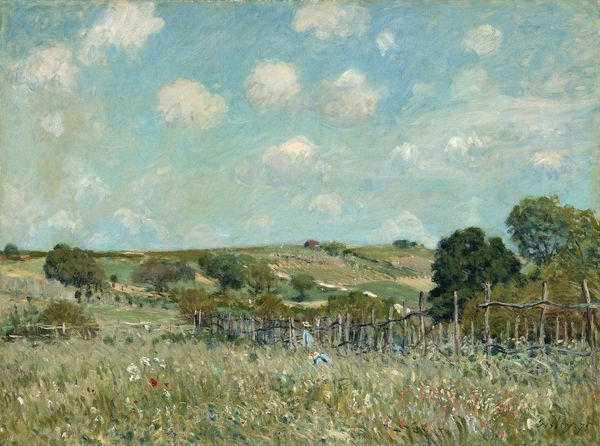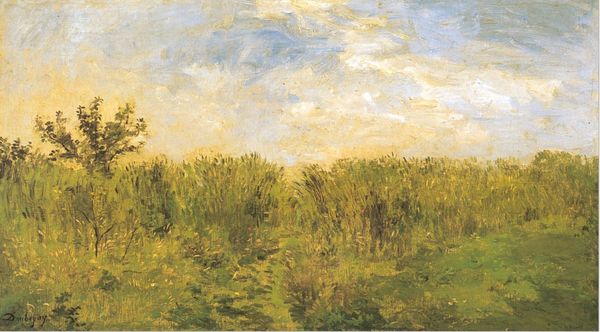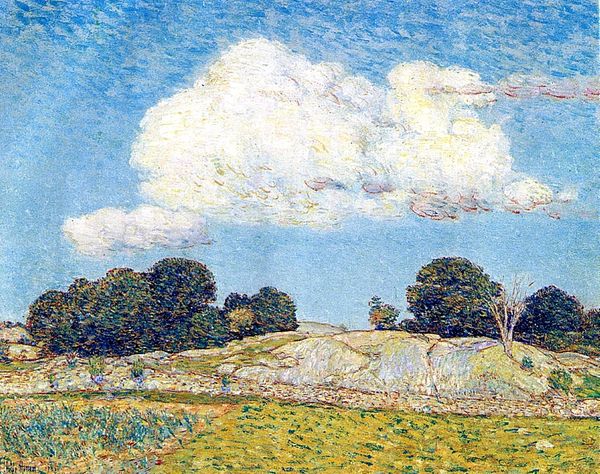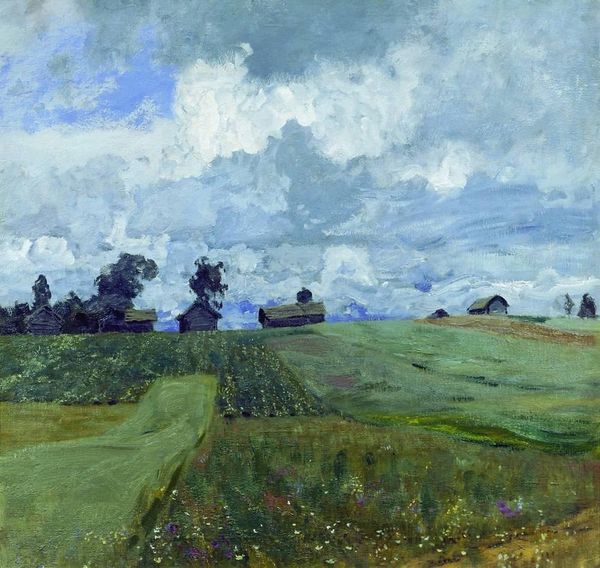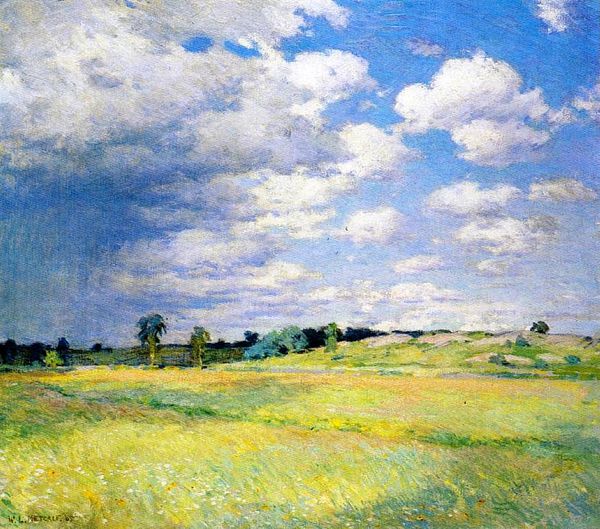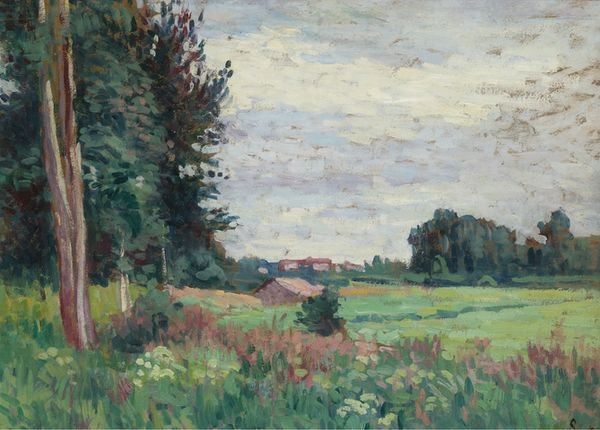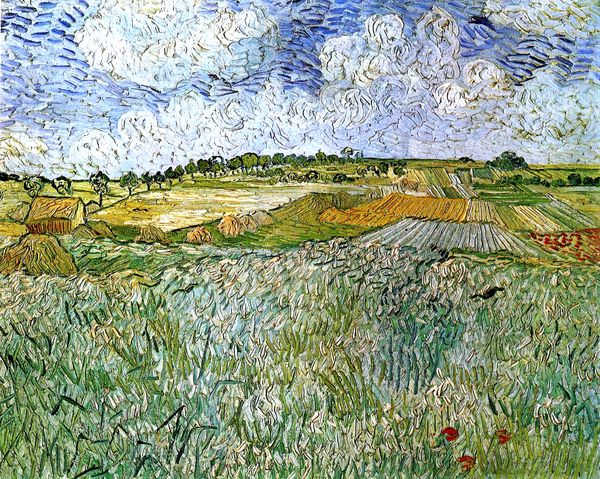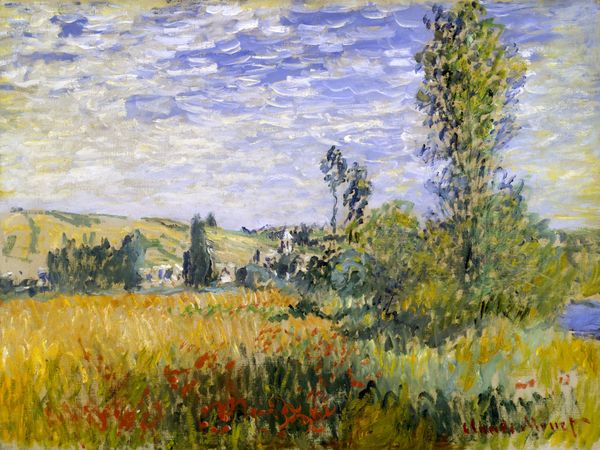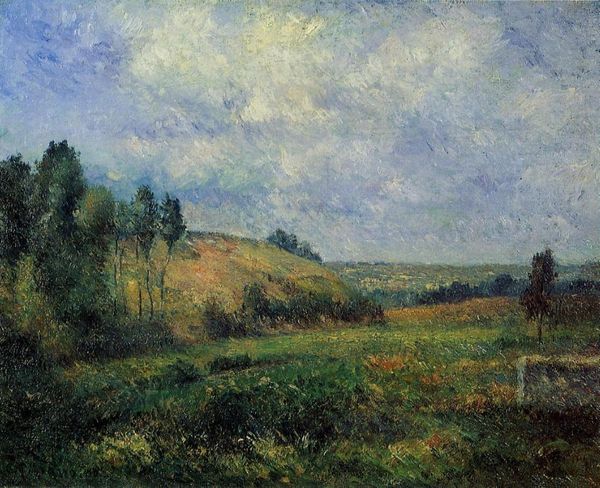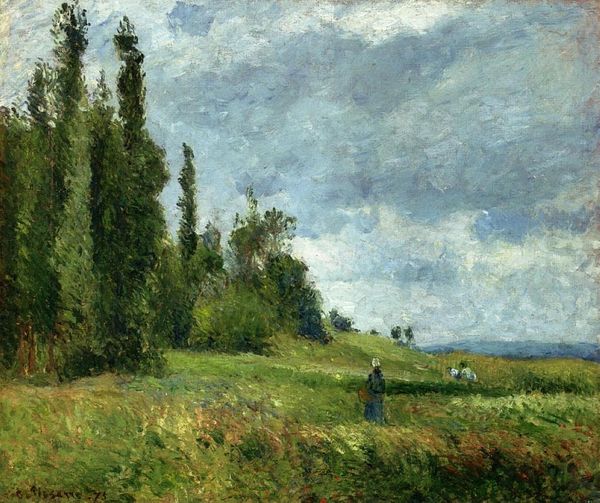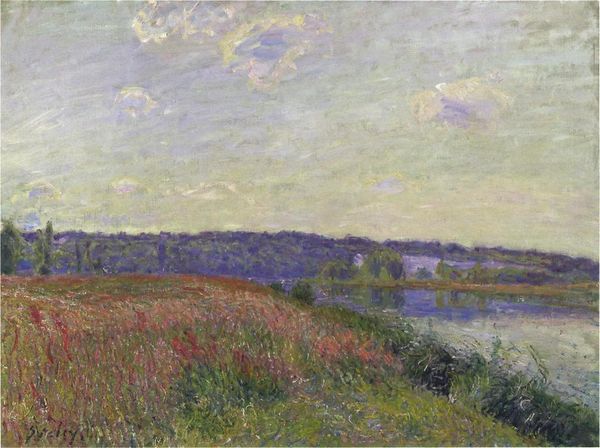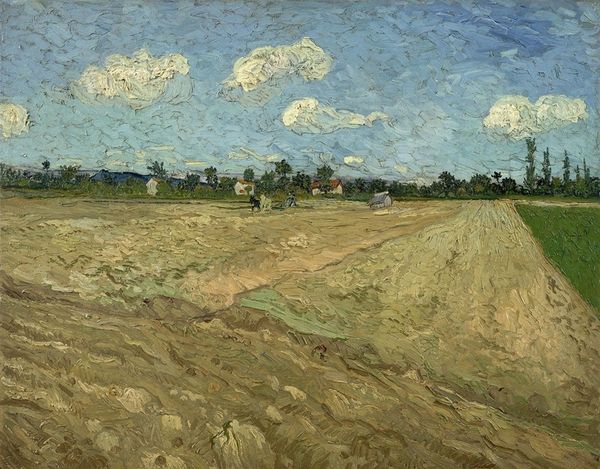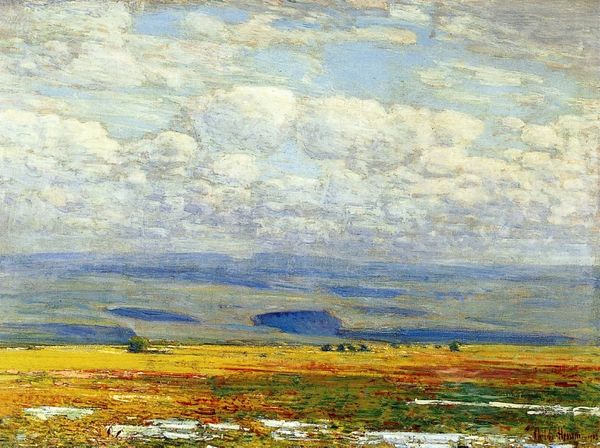
painting, plein-air, oil-paint, impasto
#
sky
#
organic
#
painting
#
impressionism
#
grass
#
impressionist painting style
#
plein-air
#
oil-paint
#
landscape
#
impressionist landscape
#
nature
#
oil painting
#
impasto
#
cloud
#
natural-landscape
#
post-impressionism
#
naturalism
#
realism
Dimensions: 28.5 x 37 cm
Copyright: Public domain
Curator: Looking at Vincent van Gogh's "Wheat Fields with Stacks" from 1888, what strikes you first? Editor: The palpable energy. The sky presses down, pregnant with rain. I imagine the very real labor of those harvesters racing against the approaching storm. The density of paint mimics the density of the task. Curator: Precisely. Van Gogh uses thick impasto, especially noticeable in the application of greens and yellows that compose the wheat field. The texture almost vibrates. It moves between naturalism and subjective feeling. Editor: It begs the question, what were the daily lives of the rural people represented in this canvas? The repeated forms of the wheat stacks give shape to cycles of production and labor. The labor is monumental, the scene overwhelming. Curator: I see. Consider the formal structure. See how he contrasts the flatness of the horizon line against the dynamism of the sky? The stacks ground the composition while simultaneously pointing upward, echoing the movement of the clouds. This suggests more than just the laboring body in isolation. It is work presented as being connected to the larger cosmos. Editor: A connection born of necessity. Van Gogh seems deeply interested in depicting material transformation—from field to stack to…eventually, perhaps, nourishment? The paint itself embodies this idea of raw material worked and reworked. It creates value through use and display. Curator: Note that the brushstrokes are visible and directional, lending movement and life to otherwise static subject matter, but what do they accomplish? By what logic? Editor: Perhaps that he did work *en plein air*, but that aside, such a heavily labored piece has a sort of honest transparency. The labor is self-evident in the outcome; to produce work one must produce things from work. It invites reflection on consumption. Curator: So it seems, the work prompts differing angles from which to understand this vista. Editor: Indeed. Different crops for different purposes.
Comments
No comments
Be the first to comment and join the conversation on the ultimate creative platform.

